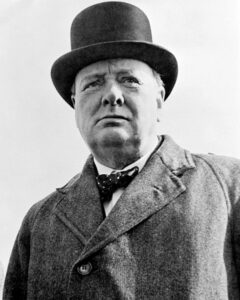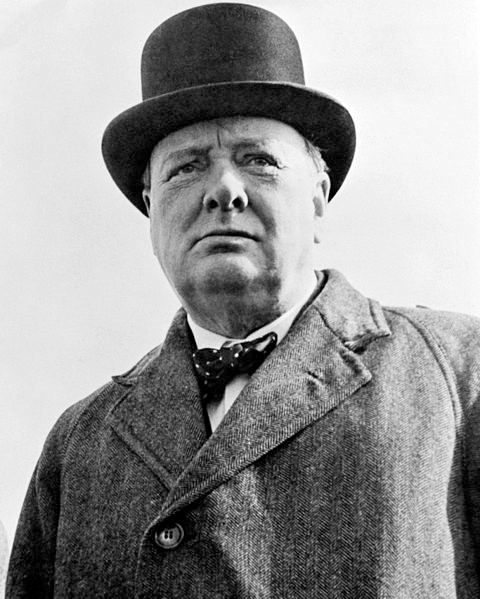T&W teaching artist Liz Arnold introduces a fresh perspective on a well-known historical figure and a new method of characterization in this lesson plan. The result is a unique exercise that excites students to practice informational reading as they develop their creative writing skills and provides a well-rounded and fun cross-curricular activity.
Lesson Overview
Grade(s) Taught: 7th
Genre(s) Taught: Creative non-fiction
Download: The Churchill Style
Common Core State Standards: (Refer to English Language Arts Standards > Writing > Grade 7 and English Language Arts Standards > History/Social Studies > Grades 6-8)
- ELA-LITERACY.W.7.3
Write narratives to develop real or imagined experiences or events using effective technique, relevant descriptive details, and well-structured event sequences. - ELA-LITERACY.RH.6-8.2
Determine the central ideas or information of a primary or secondary source; provide an accurate summary of the source distinct from prior knowledge or opinions. - ELA-LITERACY.RH.6-8.7
Integrate visual information (e.g., in charts, graphs, photographs, videos, or maps) with other information in print and digital texts.
Guiding Questions:
- What is Winston Churchill known for? (Hat, cigar)
- What do Churchill’s items tell us about his character?
- What is the difference between his cigar (flair/accessory) and his zippered shoes (action/function)?
- Who are some people whose clothing shows us their character?

LESSON
Introduction: Distribute The Wall Street Journal excerpt from a book on Winston Churchill’s personality as seen through some of his stylish flourishes: timepiece, undergarments, shoes, hats, and cigars.
Ask volunteers to read different sections of the article, and discuss what each element of Churchill’s style shows about his personality. For example, he had shoes made with zippers, not laces, because “He didn’t like to waste time…he liked to slip in and out of things.”
Establish the categories of style we will be using to illuminate personality: function and flair, bling, action, drama, and tactile (items that please the sense of touch).
Main Activity: Discuss current-day people/politicians/celebrities that are known for their style. Then brainstorm on the board examples of Churchill’s style for each category:
Functional and flair: hats
Bling: Churchill’s timepiece, “turnip” metaphor
Action: Churchill’s zipper shoes
Drama: Churchill’s cigar
Tactile: Churchill’s pink silk undergarments: “cost the eyes out of his head” (hyperbole)
Once the ball is rolling, have students begin independent work. Ask them brainstorm a list of five items that show something about their character. These could be accessories, jewelry, hair bows, footy pajamas, soft slippers, etc. Each student should then write a paragraph describing himself or herself, using as many items from the as possible to tell us about their character.
Closing: Student share their paragraphs aloud.
Materials:
“The Wonderful World of Winnie” handout, article available at The Wall Street Journal.
Vocabulary:
Winston Churchill, style, flourish, characterization, tactile
Multi-Modal Approaches to Learning:
This lesson engages learners visually (looking at images and drawing conclusions from them); aurally and verbally (reading aloud and hearing the excerpt on Winston Churchill); interpersonally (group brainstorming and discussion); and intra-personally (independent reflection and writing).

